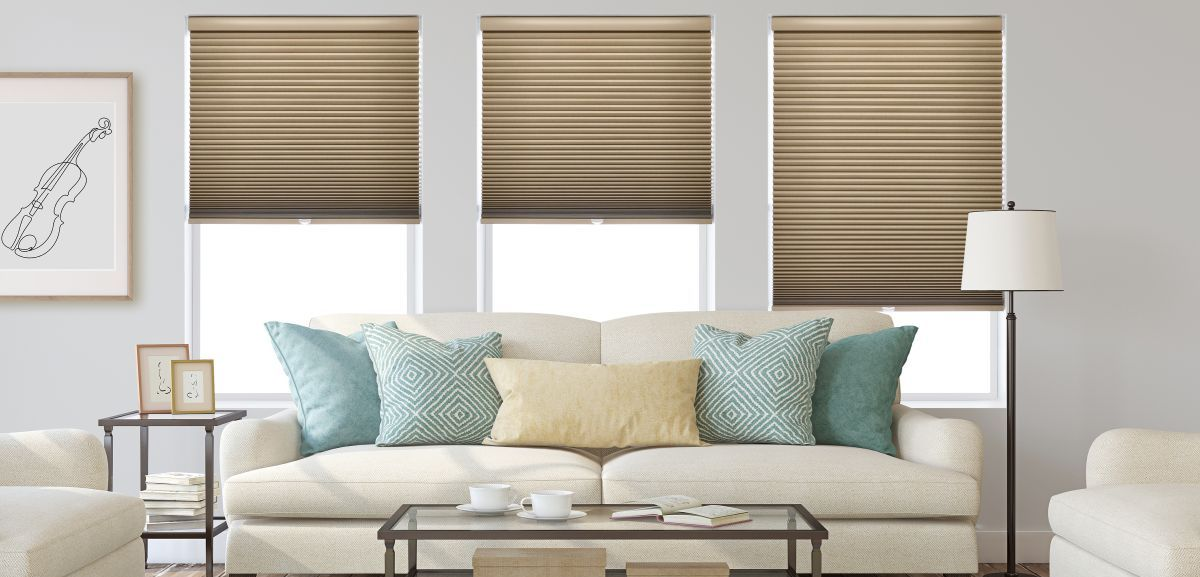
What Are Cordless Cellular Blinds?
Cordless cellular blinds, also known as honeycomb shades, are a popular window treatment option that combines aesthetics and functionality. These blinds consist of a series of horizontally stacked honeycomb-shaped cells that are designed to trap air and provide insulation. The cordless feature offers a sleek, streamlined look while ensuring safety, especially for homes with children and pets.
Top Benefits of Cordless Cellular Blinds
- Safety: Without dangling cords, they present a safer environment for children and pets.
- Energy Efficiency: The honeycomb structure traps air and insulates against heat and cold, reducing energy costs.
- Light Filtering: Available in various fabrics to offer light control options from sheer to blackout.
- Noise Reduction: The cellular design helps to block out noise, providing a quieter environment.
- Compact Design: The absence of cords gives a minimalistic and clean appearance.
Types of Cordless Cellular Blinds
- Single Cell Shades: Consists of one layer of cells, offering a lighter and more cost-effective solution.
- Double Cell Shades: Provides an additional layer of cells for enhanced insulation and energy efficiency.
- Day/Night Shades: Features two fabric types allowing for both light filtering and blackout in one shade.
- Top-Down/Bottom-Up Shades: Offers flexible light control by allowing adjustments from both the top and bottom.
How to Choose the Right One
- Room Function: Consider the purpose of the room. For example, a bedroom might require blackout shades while a living room might benefit from light-filtering ones.
- Insulation Needs: Assess the insulation requirements based on your local climate which may necessitate single or double cell options.
- Control Type: Determine if you need features like top-down/bottom-up functionality.
- Budget: Balance between cost and desired features, keeping in mind that double cell shades usually cost more.
Installation Guide
Installing cordless cellular blinds can usually be done in a few simple steps:
- Gather necessary tools (e.g., screwdriver, drill).
- Measure the window to ensure a proper fit.
- Install mounting brackets according to instructions provided with your blinds.
- Snap the headrail into the brackets.
- Check operation by raising and lowering the blinds to ensure smooth functionality.
Pricing & Budget Tips
- Cost Range: Prices typically range from $30 to $150 per window based on size and features.
- DIY Installation: Save money by installing the blinds yourself.
- Discounts: Look for seasonal sales or bulk purchase discounts.
- Compare Options: Consider similar offerings from multiple brands to find the best price.
Cordless Cellular Blinds vs. Other Window Treatments
Cordless cellular blinds offer several advantages over traditional window treatments such as curtains or roller blinds. They provide superior insulation and a modern look, while curtains can require more maintenance and offer less light control. Roller blinds lack the energy efficiency and noise reduction properties that honeycomb shades provide. Overall, cordless cellular blinds are a more versatile and contemporary solution.
Where to Buy + Popular Brands
- Hunter Douglas: Known for premium quality and wide range of styles.
- Levolor: Offers affordable options with an emphasis on customization.
- Bali Blinds: Balance between quality and price with many eco-friendly options.
- Online Retailers: Amazon, Home Depot, and Lowe's often carry various options with customer reviews for easy comparison.
Final Tips Before Buying
- Ensure proper measurements to avoid fitting issues.
- Consider ordering samples to check fabric and color in your space.
- Read customer reviews for insights on quality and ease of use.
- Check warranty information for added peace of mind.
Conclusion
Cordless cellular blinds are an excellent option for anyone looking to combine style, functionality, and energy efficiency in one package. With a variety of types and features, choosing the right blind can be customized to meet the needs of any room. Ultimately, their advantages over traditional blinds and curtains, such as improved insulation and child safety, make them a choice worth considering for any homeowner.
Sources:

